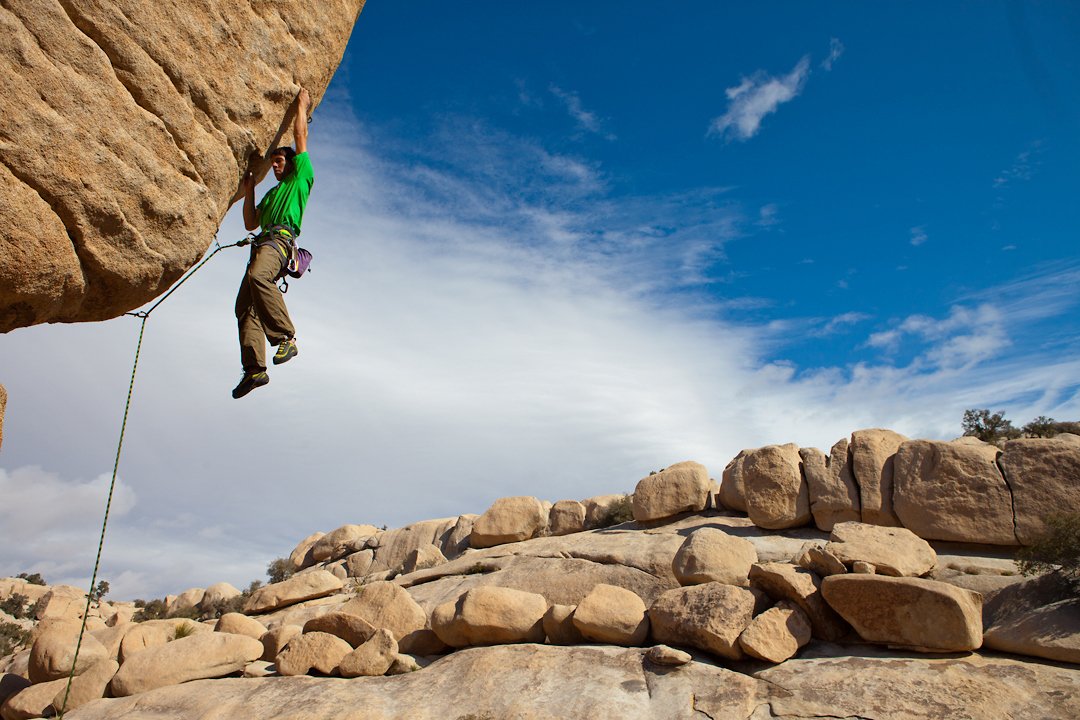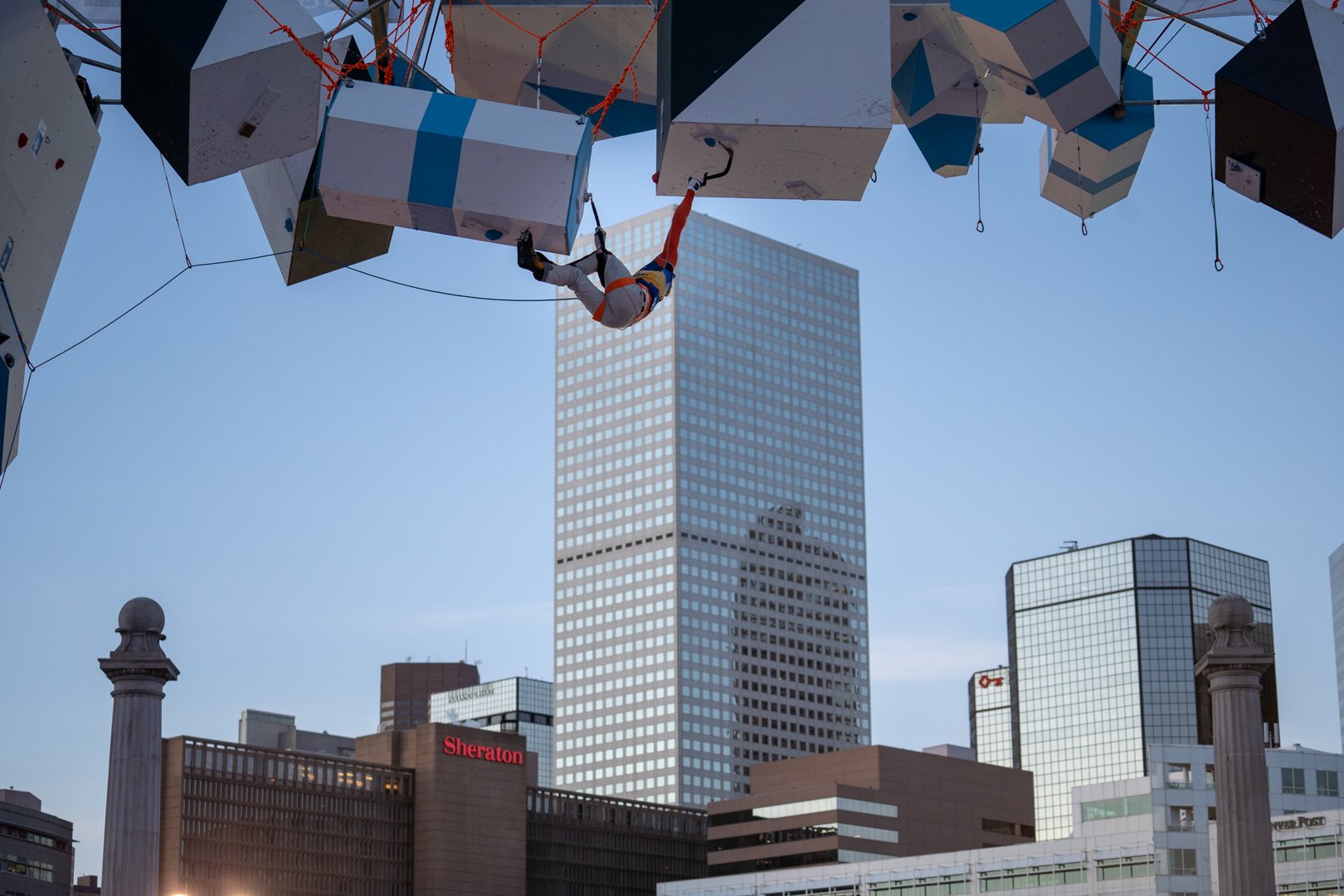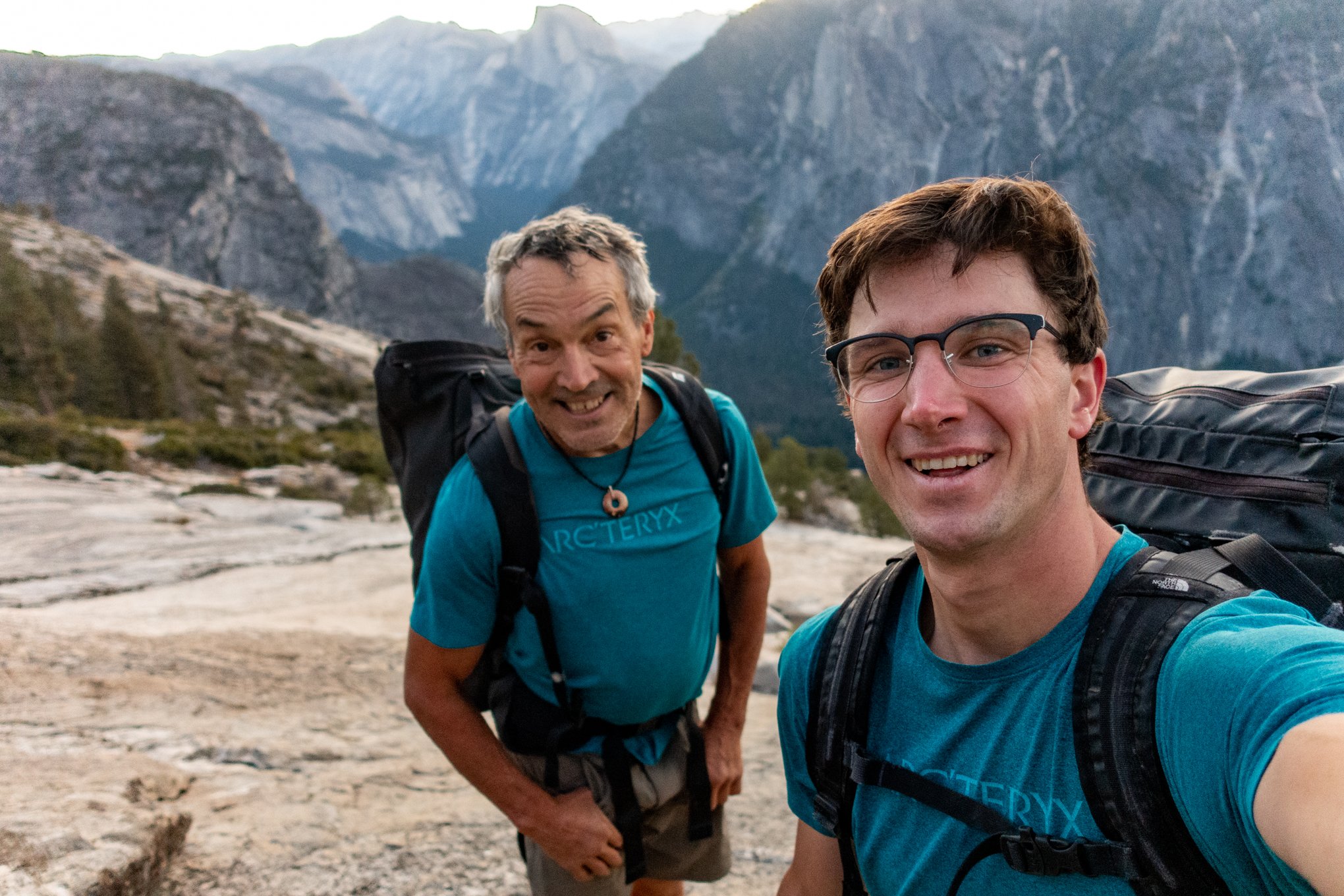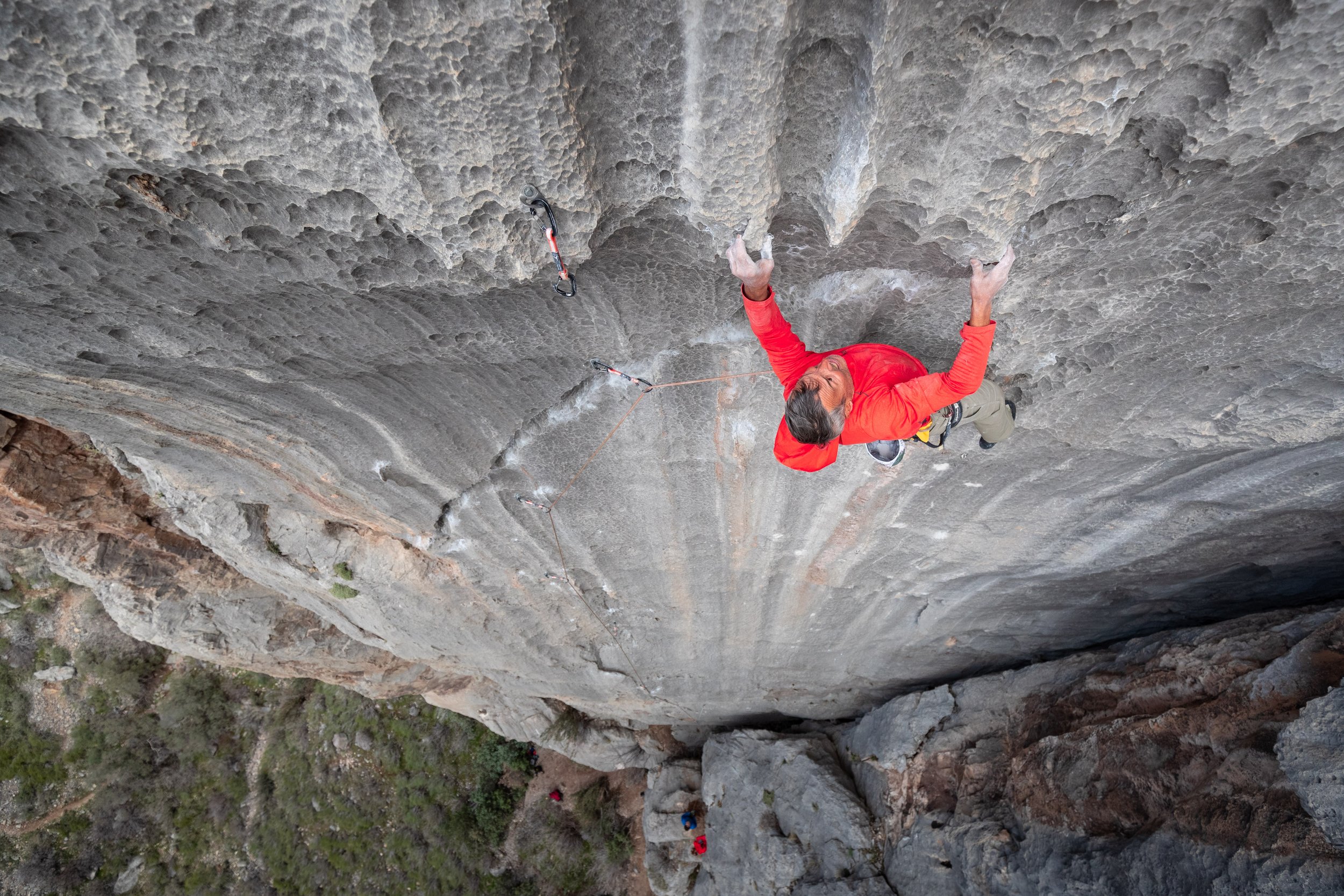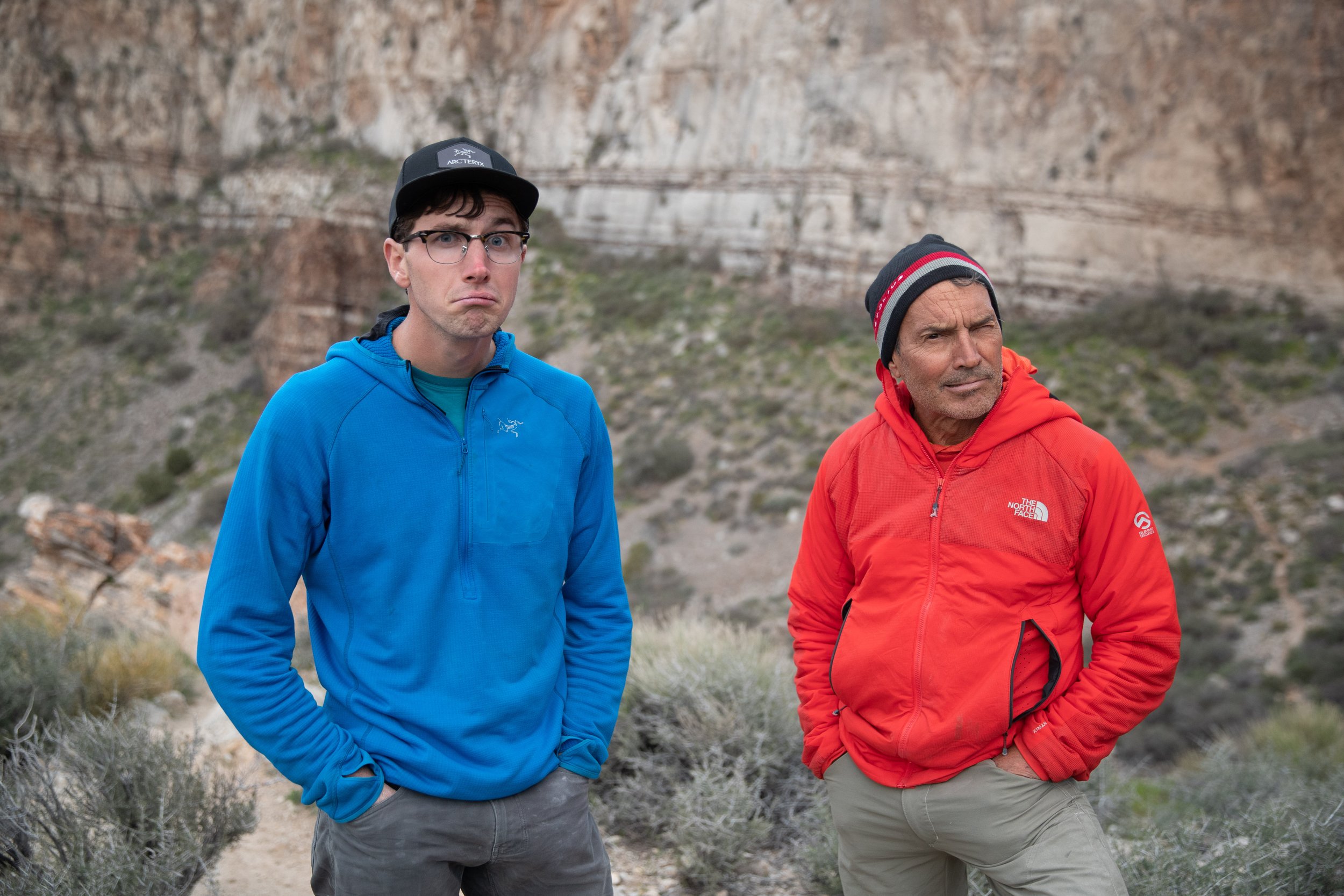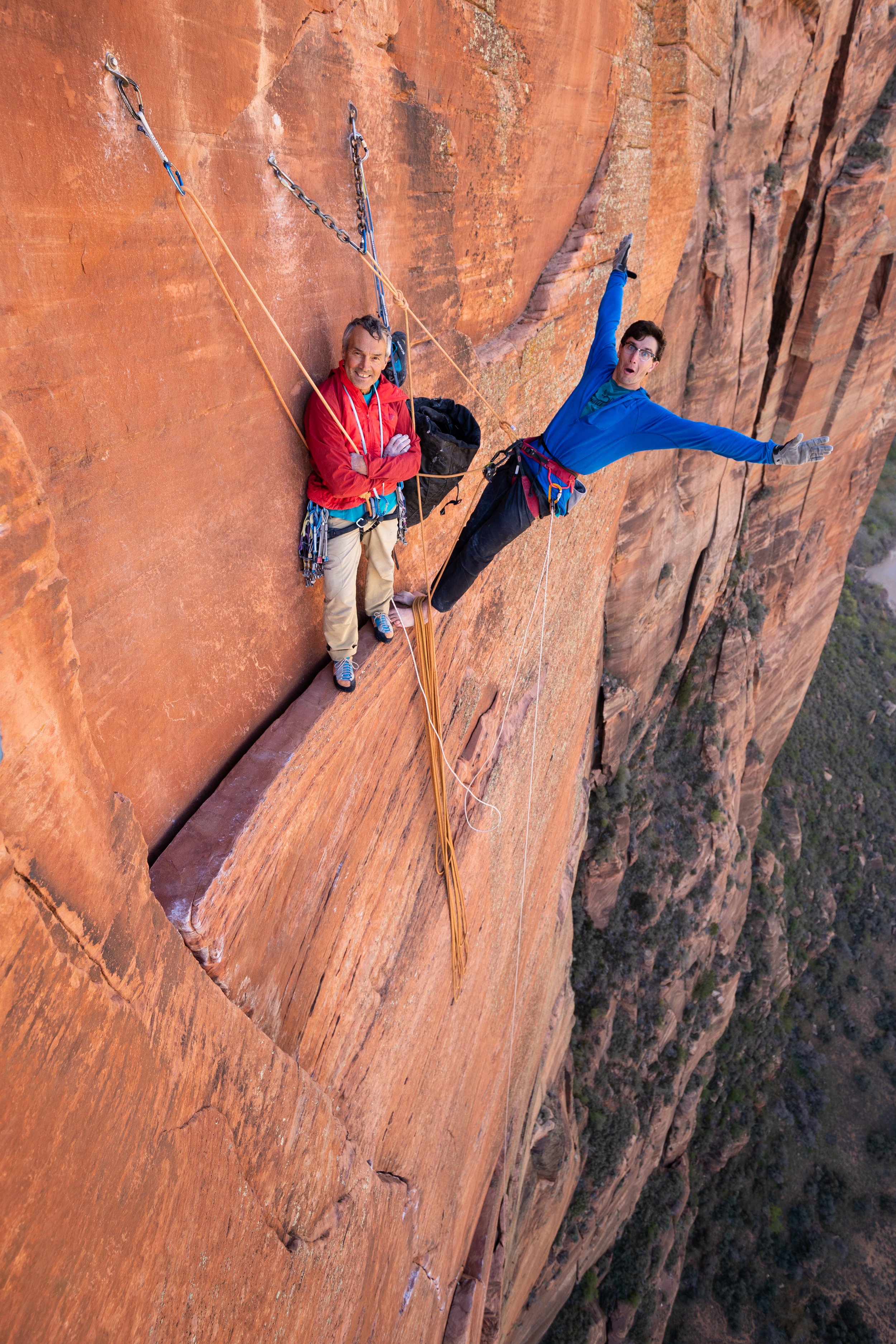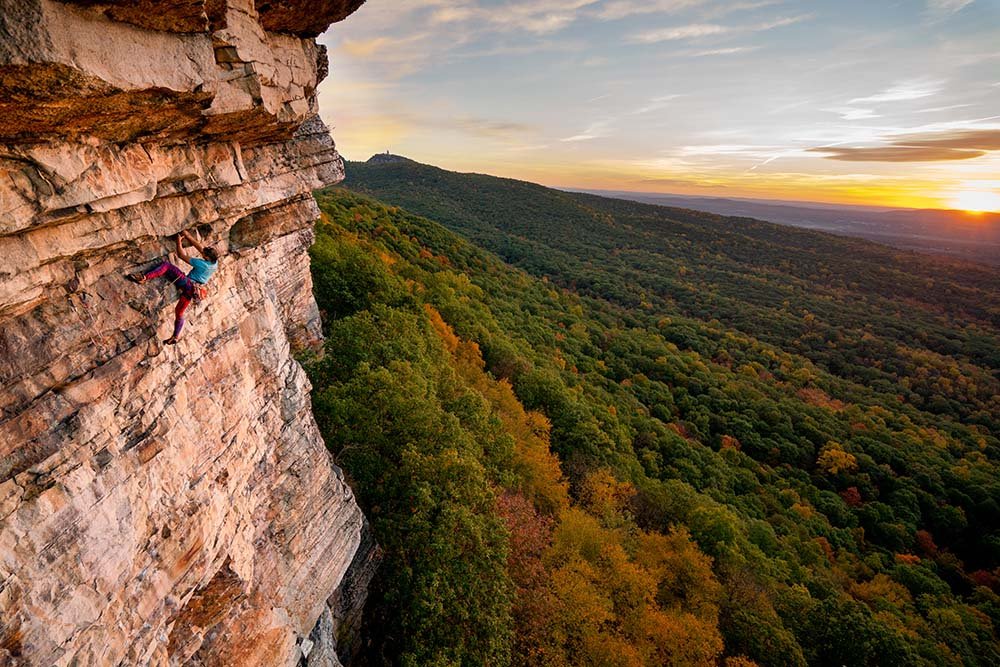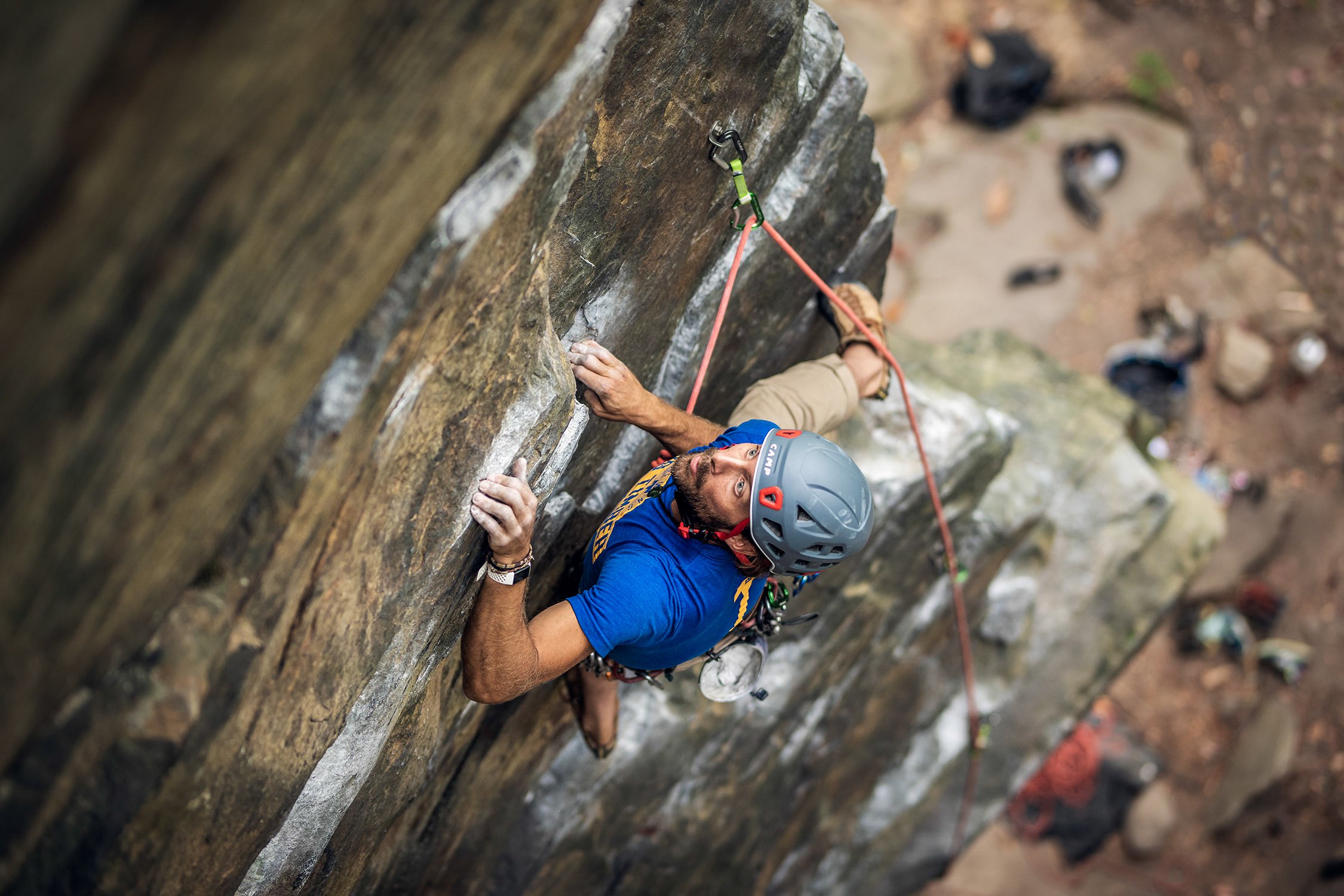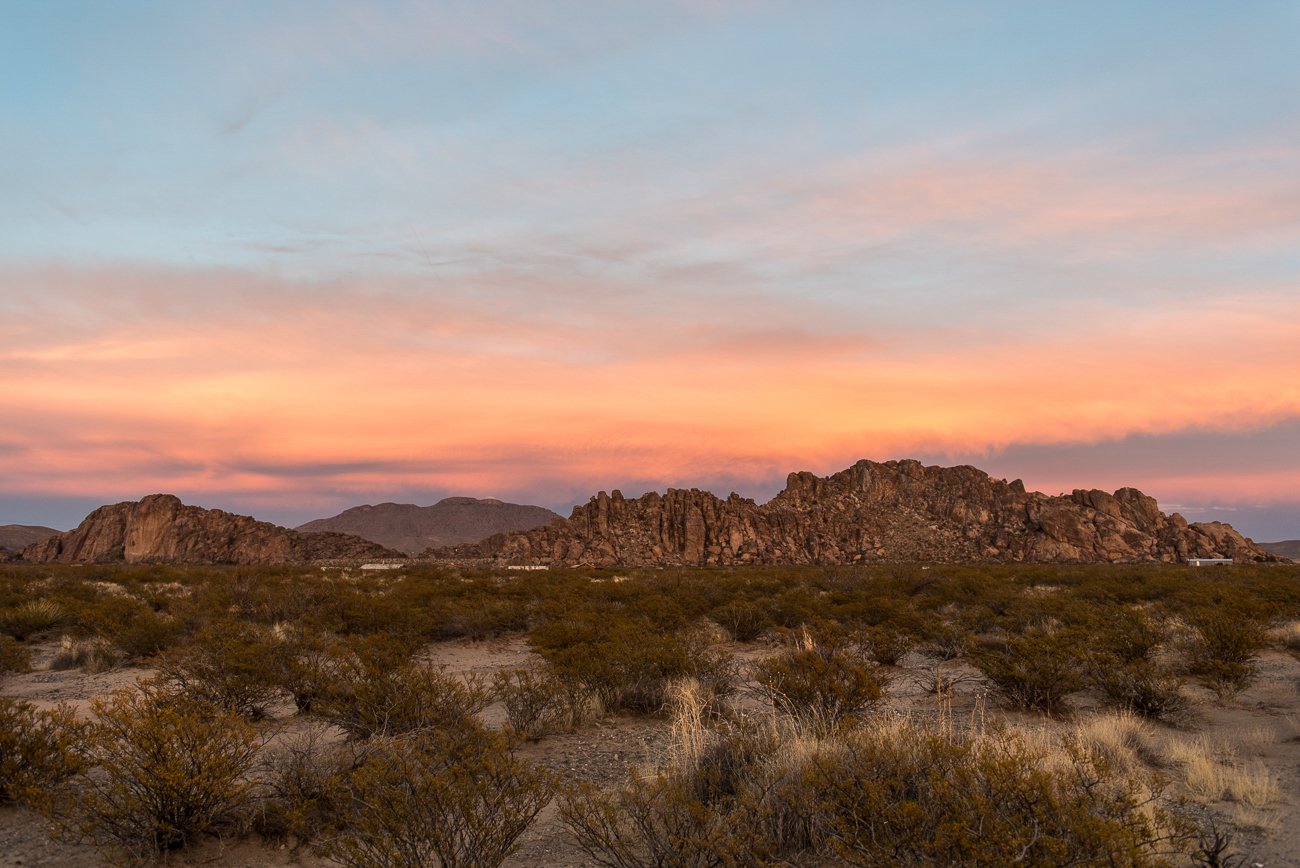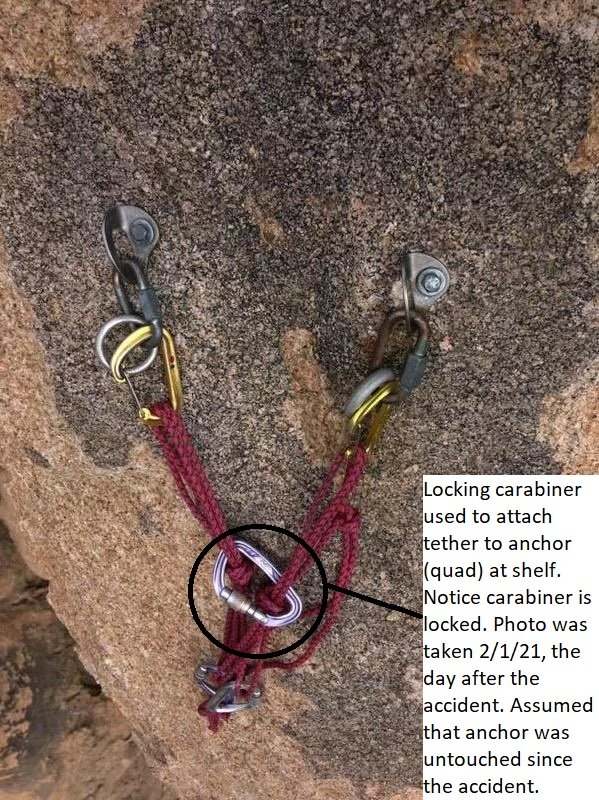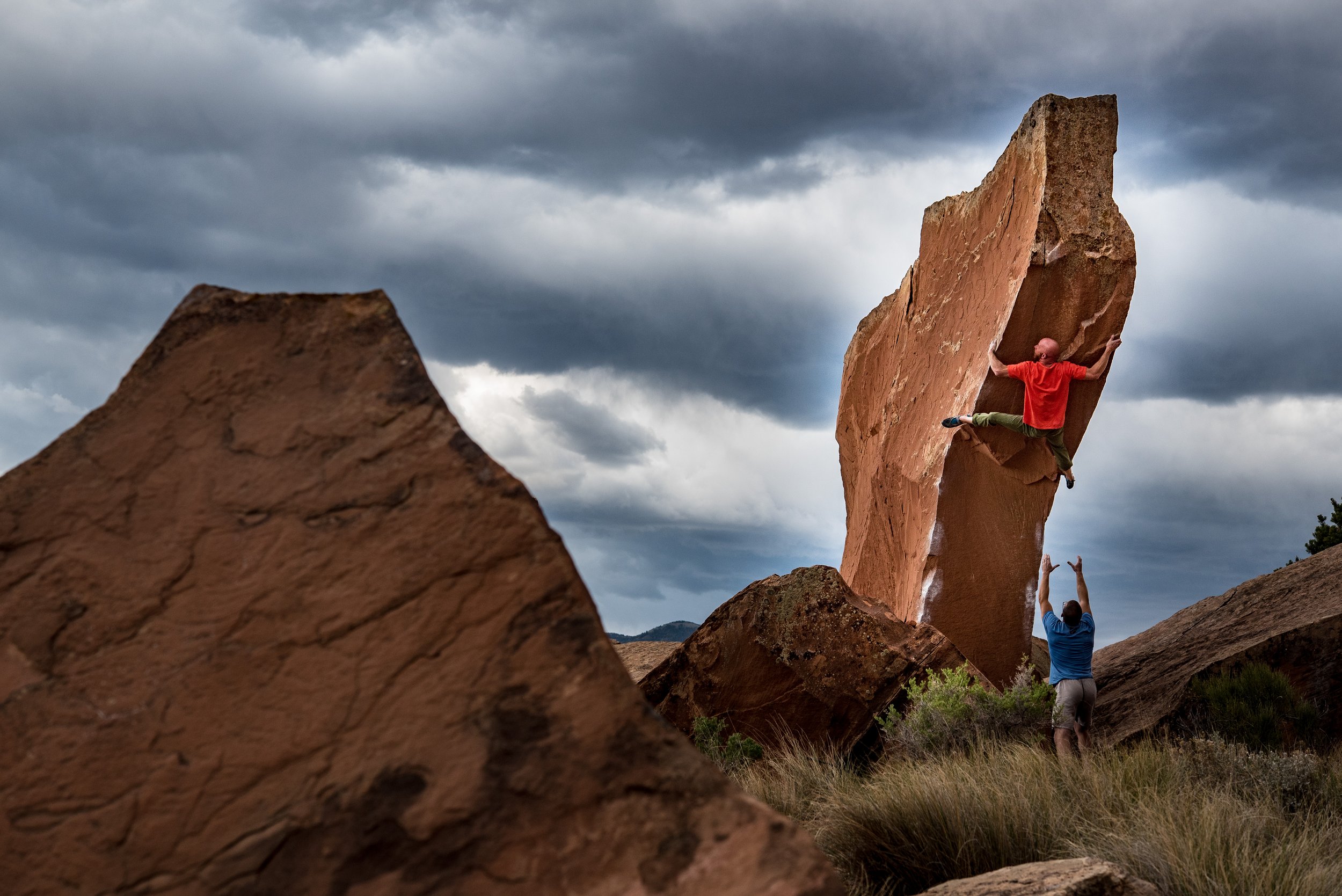Alex Honnold, Factor Figure (5.13b), Joshua Tree National Park, CA. PC: Andrew Burr
March 13, 2022
NPS Joshua Tree National Park
RE: Scoping Comments on Joshua Tree Climbing Management Plan
The American Alpine Club (“AAC”) appreciates the opportunity to provide comments for the scoping period on the climbing management plan (“CMP”) currently underway in Joshua Tree National Park (“JTNP”). JTNP is a world class destination for rock climbing and attracts many of the AAC’s 25,000 members nationwide to climb and enjoy the Wilderness resources in the JTNP. For more than a decade, the AAC has engaged in climbing management in the JTNP and values the efforts of the National Park Service (“NPS”) to steward the abundant and unique resources of JTNP. The CMP will be critical in managing the ecological, cultural, and natural resources of the JTNP, especially as more people recreate in the outdoors and the population of climbers continues to grow. The AAC looks forward to working with the NPS to steward these important resources for generations to come and support their endeavor to create an informed CMP.
I. The American Alpine Club
The AAC is a 501(c)(3) non-profit organization based in Golden, Colorado, with over 25,000 members nationally. Founded in 1902 to support the research and exploration of mountainous regions, the AAC remains committed to supporting the climbing and human-powered outdoor
recreation communities over a century later. Grounded in community and location, the AAC’s mission is to share and support members’ passion for climbing and respect for the places they climb. Through education, community gatherings, stewardship, policy, advocacy, and scientific research, the AAC strives to build a united community of competent climbers and healthy climbing landscapes.
II. Comments and Concerns
The AAC’s volunteer base are large contributors to the success of the AAC. Across the nation, the AAC engages hundreds of volunteers in policy, advocacy, and education through the 25 sections and 56 chapters of the organization. The AAC comments and concerns mentioned here are informed by volunteer leaders of the AAC’s San Diego Chapter and the Sierra Nevada Section.
A. The AAC is concerned with the NPS’s understanding and treatment of the Wilderness Act of 1964 (“Wilderness Act”).
The AAC supports the efforts by JTNP to thoughtfully balance the needs of the American public to access and enjoy primitive and unconfined recreation with the protection of Wilderness characteristics and other natural resources found within JTNP. With more than 6,500 individual climbing routes, a long and rich history of climbing, and a unique but fragile high desert landscape, JTNP is a world renown climbing destination attracting climbers of all abilities
The AAC is concerned with JTNP’s understanding and treatment of the Wilderness Act’s meaning and particularly their definition of "fixed anchors” as “installations.” Fixed anchors (which include bolts, pitons, nuts, slings, or any other equipment) are necessary climbing equipment and fundamental for the safety of the climbing community, both on the ascent and descent of technical climbing terrain.
In crafting the Wilderness Act of 1964, Congress established the National Wilderness Preservation System.(1) The plain language of the Wilderness Act protects and manages for those places which have “outstanding opportunities for solitude or a primitive and unconfined type of recreation.”(2) Additionally, the Wilderness Act requires that such areas “shall be devoted to public purposes of recreational, scenic, scientific, educational, conservation, and historical use.”(3) As one of the federal land management agencies tasked with overseeing the management of wilderness areas, the NPS must “administer[ing] such area(s) for such other purposes for which it may have been established as also to preserve its wilderness character.”(4) Therefore, Congress’ objective was to administer wilderness areas “for the use and enjoyment of the American people in such a manner as will be unimpaired for future use and enjoyment as wilderness.” (5)
The AAC encourages the JTNP to use their existing authorization under the 2013 Director’s Order # 41 (“DO#41”) for the appropriate management of Wilderness climbing rather than changing its understanding of the Wilderness Act’s definition. DO#41 is an order written to guide servicewide efforts for the NPS in meeting the requirements for the Wilderness Act (16 U.S.C. 1131-1136).6 DO#41 recognizes climbing as “a legitimate and appropriate use of Wilderness” and noted that “[t]he occasional placement of a fixed anchor for belay, rappel, or protection purposes does not necessarily impair the future enjoyment of Wilderness or violate the Wilderness Act.”(7)
Therefore, the DO#14 does not prohibit fixed anchor installations, nor does it require Minimum Requirement Analysis (“MRA”) for the placement, removal or maintenance of fixed anchors for recreational climbing. A new Wilderness Act interpretation, akin to the current scoping CMP, does not align with the United States federal policy and practice, and lacks public participation and political process.
To both preserve the wilderness character8 of Wilderness Areas and to accommodate necessary opportunities for primitive and unconfined type of recreation, tangible and intangible qualities should be considered. Intangible qualities include biophysical environments, personal experiences, and symbolic meanings, whereas tangible qualities include natural, undeveloped, untrammeled.(9) These components have inherent tension and require balanced management strategies that are challenging to develop and implement. In recognition of this complex mandate, the AAC supports climbing practices that minimize the human impact on the environment and, in addition, promotes Wilderness climbing as an appropriate and suitable use of Wilderness. These practices are aimed to reduce the human influence on the landscape, preserve the Wilderness visitor experience, and to promote appropriate (and not undue) regulation of climbing in accordance with the Wilderness Act.
The AAC is concerned that the new interpretation of the Wilderness Act by JTNP unnecessarily frustrates historical use patterns of climbing in the JTNP, confuses Wilderness climbing management policies, sets a concerning national precedent, creates serious safety concerns for the climbing community, and erodes the climbing communities’ ability to support future Wilderness designations. For these reasons, we encourage JTNP to focus on implementing current NPS management policies, support more robust climber education programs, engage in further resource stewardship, and capitalize on more opportunities to work with non-profit partners to resolve climbing-related management issues.
B. JTNP’s interpretation of the Wilderness Act departs from national policy guidance and sets concerning precedent for Wilderness climbing resources.
The use of fixed anchors to facilitate climbing in remote backcountry locations predates the enactment of the Wilderness Act by several decades. More importantly, both federal agencies, the Department of Interior and the Department of Agriculture, as well as notable Wilderness advocacy organizations, have long understood fixed anchors to be appropriate in Wilderness. The AAC has long supported the consistency between federal agencies regarding the management of fixed anchors in Wilderness. For the NPS, DO#41 provides consistency and predictability for the climbing community within the NPS Wilderness Areas.
The JTNP’s CMP proposal is in opposition to decades of management policy regarding fixed anchors in various federal areas, including in other NPS managed Wilderness Areas. This is in direct contrast to the public process and stakeholder input approved by the Director of the NPS in 2013, who issued DO#41 “to provide accountability, consistency, and continuity in the [NPS] wilderness stewardship program, and to guide servicewide efforts in meeting the requirements of the Wilderness Act.” (10)
It is also important to note that in the past the NPS has not questioned or misinterpreted “fixed anchors” to be “prohibited installations” under the Wilderness Act, Section 4(c).(11) The 1993 Joshua Tree CMP(12) and the 2000 Joshua Tree Backcountry Management Plan(13) have also explicitly considered fixed anchors, and chosen not to define them as prohibited installations nor to necessitate an MRA use for purposes of placement or replacement (although it does require MRA for administrative purposes such as search and rescue).
The AAC has partnered with other national climbing organizations and wilderness groups to support this policy and has acknowledged the necessity for fixed anchors in Wilderness Areas to provide foundational safety for climbers. As stated in the DO#41, “[t]he occasional placement of a fixed anchor for belay, rappel, or protection purposes does not necessarily impair the future enjoyment of Wilderness or violate the Wilderness Act.”(14) Importantly, the AAC appreciates DO#41’s focus on the impacts of high use levels, the types of impacts those use levels cause, and the resulting effects on wilderness character. This approach focuses management solutions on the measurable and objective impacts of climbing routes on wilderness character. This approach is preferable to a blanket determination that fixed anchors are installations.
C. The AAC supports the JTNP’s efforts to protect and promote appropriate use of Wilderness.
The AAC supports efforts by the JTNP to thoughtfully balance the needs of the public to access and enjoy primitive and unconfined recreation with the protection of Wilderness characteristics and other natural resources found within the JTNP.
In partnership with the Access Fund, The Wilderness Society, National Parks Conservation Association, and the American Mountain Guide Association, the AAC shared comments and support for the development of DO#41, as well as Resource Manual #41 during thier creation. The AAC supports appropriate regulations and restrictions on fixed anchors in Wilderness, including the principle that fixed anchors should be “rare” in Wilderness. Furthermore, the AAC supports the JTNP’s authority to manage fixed anchor placement in the Wilderness, including the prohibition of bolt-intensive climbs that exhibit high levels of use and measurable impacts to the JTNP resources and social conditions.(15)
The AAC supports the prohibition on the use of power drills in wilderness, mandatory authorization (per DO#41) for the placement of fixed anchors, and management of other aspects of recreational use like trails and human waste management. NPS can do more to protect Wilderness character by focusing its limited resources on these management issues rather than reviewing every existing fixed anchor within wilderness.
D. The ACC agrees with DO#41, Section 7.2, stating that climbing is a legitimate, appropriate, and historical use of Wilderness.
The Wilderness climbing experience is unique, as it provides opportunities for solitude, primitive, and unconfined recreation. Climbing and the use of fixed anchors is a legitimate, appropriate, and historical use of Wilderness that is compatible with the Wilderness Act.
a. Climbing is a “historical use” in the JTNP.
The Wilderness Act requires that Wilderness Areas “shall be devoted to public purposes of ….historical use.”(16) The JTNP has a long and rich history of climbing dating as early as the 1940’s.(17) Early trips organized by the Sierra Club’s Rock Climbing Section and the Boy Scouts brought young adults to the JTNP to experience the vastness of the recently designated Joshua Tree National Monument (“National Monument”) and to practice the craft of rock climbing in a group setting.(18)
Figure 1: Dick Webster completing the most challenging moves in the route (also known as “crux” moves) along the Southwest Corner of Headstone Rock, a climbing route that was first completed in 1958 by Mark Powell. Note the bolt used for protection in the foreground.(21)
Photo: Wolf & Dominick, 1976.
By the 1950’s, more advanced climbers and mountaineers (including notable individuals like Royal Robbins and Yvon Choinard) began taking frequent trips to the National Monument to climb. It was in this decade that notable first ascents of many of the National Monument’s formations occurred, including the West Chimney of Intersection Rock in 1953 by Jerry Gallawas and Barbara Lilly, as well as the Lost Pencil by Don Cornell and John Merriam, the Popes Hat by Don Cornell and Rod Smith, and the Wedge by Bob Boyle, all in 1956.(19) Applying interesting tactics, Bob Boyle and Rod Smith managed to first reach the summit of Headstone Rock in 1956 by climbing a rope which they had successfully thrown over the top of the formation.(20)
By the time President Gerald Ford signed Public Law 94-567 in 1976, designating the bulk of the National Monument as Wilderness, several hundred climbing routes, and at least 101 routes which utilized the placement of fixed anchors, were already established in the National Monument following nearly 30 years of use from climbers. (22,23)
As climbing grew throughout the 1960’s and 1970’s, so to did the tools and techniques of modern climbing practices. While many climbers continued to apply aid climbing techniques (placing pitons, small chocks, and nylon ladders to ascend the rock face), the emergence of free climbing (only using their hands and feet to climb while placing some pieces of traditional gear or clipping bolts for protection) revolutionized the sport. The use of bolts and fixed anchors, however, were deemed a necessary and accepted tool by the climbing community. Although, the placement was considered a “grave responsibility” and local ethics dictated that some routes should be completed without bolts, or with as few as possible. (24)
Figure 2: A climber uses a hand drill to install a bolt on a route called Duchess at the Feudal Wall. First ascent February 1974 by Chris Gonzales and Rob Stahl. Photo: Wolf & Dominick, 1976.
In designating the bulk of the National Monument as a new Wilderness Area, Congress recognized the primitive and unconfined recreation opportunities that existed in the National Monument, not the least of which were the abundant and well-known rock climbing resources. Climbing would continue to grow in the National Monument throughout the 1980’s and 1990’s as the climbing community recognized this special landscape as a national treasure. In 1994, Congress took another step to protect the National Monument with the passage of Public Law 103-433, adding 234,000 acres to the National Monument and changing its status to a National Park. (25)
Today, the JTNP has over 6,500 individual climbing routes scattered throughout the nearly 800,000 acres and the climbing community is full of staunch supporters of the stewardship and protection of this unique and historical climbing resource.
b. Climbing is “a legitimate and appropriate use of Wilderness” in the JTNP.
DO#41 explicitly mentions climbing as “a legitimate and appropriate use of wilderness.”(26) It defines climbing management, allowing for the use, maintenance, and replacement of fixed anchors in Wilderness Areas. Fixed anchors are necessary for safe Wilderness climbing when ascending a route, descending from a summit, or responding to an emergency. Fixed anchors are also resource protection tools that minimize climbing impacts, such as facilitating a technical descent rather than walking an exit trail causing erosion and impacts to vegetation.
E. JTNP’s proposed CMP raises serious concerns for the wellbeing and safety of the climbing community.
Climbing in the Wilderness long predates the passage of the Wilderness Act. Values of solitude, challenge, primitive, and unconfined recreation, and self-reliance are born from Wilderness climbing experiences. In the human mind, Wilderness climbing symbolically represents challenge, perseverance, humility, restraint, and interdependence with the natural world. These are the values that define Wilderness experience, the symbolism that surround it, and epitomize the human dimensions of the Wilderness Act. The AAC deeply values the protection of Wilderness, as it provides the lifeblood of true traditional climbing and vertical adventure.
During the JTNP’s February 8, 2022 CMP meeting, planners opposed fixed anchor replacements for bolt-intensive routes because they believe that are unacceptable in the Wilderness. While the AAC agrees that Wilderness should not be sport climbing arenas and that bolt intensive climbs may facilitate unacceptable impacts on wilderness resources, caused by the aggregation of human use, they strongly disagree with the NPS conclusion regarding bolt replacement. It is very dangerous and misguided to leave aged fixed anchors in place because they have the potential to lead to life-threatening results (see Exhibit A). The AAC does, however, support that if a climbing route is unacceptable in Wilderness because it threatens sensitive cultural or natural resources and/or attracts unacceptable use-levels, it may be considered for closure to the public. The JTNP should consider other options to manage Wilderness climbing, as the current CMP proposal threatens the climbing community’s safety, not only in the JTNP, but across the country.
The AAC opposes any policy that creates obstacles for the Good Samaritans that volunteer time, effort, and resources to replace antiquated or unsafe hardware (see Exhibit A: Figures 3-6). Ultimately, this would have the effect of restricting climbers’ access to many of the most iconic climbs in JTNP and other park units across the country, cause significant uncertainty for climbers who have historically relied on such anchors, and send the message that climbers are not welcome in Wilderness.
III. Conclusion
Climbers and members of the AAC have advocated for the protection of Wilderness for more than 60 years and were even advocates for the very creation of the Wilderness Act itself. David R. Brower, alpinist and lifetime member of the AAC who served as the organization's Vice President from 1956-58, contributed substantially to the establishment of sound global environmental practices and the conservation of many of America’s wild landscapes. Brower epitomizes the conservation ethic shared by many in the climbing community to conserve Wilderness areas, like Rick Reese, Peter Metcalf, Yvon Choinard, Rick Ridgway, Doug Thompkins and others.
The AAC is concerned that JTNP’s proposed CMP will deter climbers from supporting critical conservation initiatives and alienate climbers from their Wilderness roots. Many of the greatest conservation gains during the 21st Century are a direct result of the collaboration between the human-powered outdoor recreation and conservation communities.
The proposed JTNP CMP will affect the public’s opinion of the need for conservation and have a negative and direct impact on the future of public lands. Undoubtedly, the newly proposed fixed anchor policy by JTNP will have implications for other Wilderness climbing areas across the country. This will undermine the support from climbing communities with future Wilderness designations and inherently frustrate their ability to enjoy Wilderness experiences through primitive and unconfined recreational climbing.
Furthermore, place-based management is the most appropriate in NPS Wilderness due to diversity of wilderness resource, climbing resources, visitor preferences, motivation, skill, and amount of visitation. (27)
We hope that the JTNP will reconsider its CMP proposal and, instead, determine the best path forward is to manage recreational climbing in accordance with DO#41 - to protect wilderness character utilizing the many policy tools available today. The AAC is ready and willing to assist the NPS to deliver on their dual mandate of conserving Wilderness characteristics while also ensuring the benefit and enjoyment of the JTNP for the broader public.
We welcome further discussion as your process moves forward.
Respectfully submitted,
Taylor Luneau
Policy Manager, American Alpine Club
CC:
Jamie Logan, Interim-CEO, American Alpine Club
Amelia Howe, Advocacy and Government Affairs Manager, American Alpine Club
Shane Johnson, Chief Marketing Officer, American Alpine Club
Damon Yeh, California Advocacy Network Chair, American Alpine Club
Erik Murdock, VP Government Affairs and Policy, Access Fund
Katie Goodwin, Policy Analyst and California Regional Director, Access Fund
EXHIBIT A
Figure 3: An old ⅜ inch plated steel bolt that was removed and replaced by a climber in Western Colorado. Note the rust on the bolt sleeve.
Figure 4: A dangerous old homemade aluminum L stock hanger used on the first ascent of a climb in Southwest Colorado. These types of bolts are in need of a safer replacement with new age ½ inch steel bolts.
Figure 5: Hanger associated with bolt in Figure 3. The work of local climbing organizations to replace these requires an abundance of knowledge, time, and passion. Local climbing community experts are instrumental in the upkeep of bolts and other fixed anchors.
Figure 6: A bolted belay station on a climb in Red Rock Canyon National Conservation Area. Note the older bolts adjacent to the three new ones.
1 The Wilderness Act, 16 U.S.C. ch. 23 § 1131.
2Id.
3Id. at §1133(b).
4Id.
5Id.
6 2013 NPS Director’s Order #41: Wilderness Stewardship.
7Id.
8Id. at Section 6.2.
9 Mchugh, Katherine. (2019). Wilderness Rock Climbing Indicators and Climbing Management Implications in the National Park Service. Graduate Student Thesis, Dissertations, & Professional Papers.
10 Director’s Order #41.
11 16 U.S.C. ch. 23 § 1131 et seq. Section 4(c).
12 NPS. Joshua Tree National Monument Climbing Management Plan. 1993. Available at: https://www.nps.gov/jotr/getinvolved/upload/JOTR_ClimbingManagementPlan1993.pdf. 13 U.S. Department of Interior National Park Service. Superintendent’s Annual Report. 2001. Joshua Tree National Park. Available at: http://npshistory.com/publications/annual_reports/jotr/2001.pdf.
14 Director’s Order #41.
15 Id.
16 16 U.S.C. § 1133(b).
17 Kane, Jenny. 2017. Landscape of Belonging: Joshua Tree’s Climbing Legacy. Available at: https://mojaveproject.org/dispatches-item/landscape-of-belonging/.
18 Kane, Jenny. 2017.
19 Wolf, John & Dominick, Bob. 1976. A Climber’s Guide to Joshua Tree National Monument. Desert Rats Uninhibited Publication.
20 Wolf & Dominick. 1976.
21 Id.
22 Public Law 94-567, October 20, 1976.
23 A cursory review of John Wolf and Bob Dominick’s 1976 guidebook, titled “A Climber’s Guide To Joshua Tree National Monument,” revealed that 101 total routes (which included at least 1 bolt or fixed anchor) were established prior to the 1976 Wilderness designation and rappel anchors were installed on at least six of the National Monument’s popular rock formations. This number would likely grow with additional data collection from the 1979 edition and other publications, such as Randy Vogel’s “Joshua Tree Climbs: 1,000 of the Best Climbs in Joshua Tree National Park.”
24 Id.
25 Public Law 103-433. October 31, 1994.
26 Director’s Order #41.
27 Murdock, E. (2004). Understanding Recreation Flow to Protect Wilderness Resources at Joshua Tree National Park, California (Masters thesis). Available from Working Papers of the Finnish Forest Research Institute 2, Rovaniemi, Finland.
Murdock, E. (2010). Perspectives on Rock Climbing Fixed Anchors Through the Lens of the Wilderness Act: Social, Legal and Environmental Implications at Joshua Tree National Park, California (Unpublished doctoral dissertation). Tucson, AZ: The University of Arizona.
Barnett, Eve S. (2016). Beware of the Cold, Clammy Hand of Consistency: Rock climbing policy and the surprising success of the National Park Service. Princeton, New Jersey: Princeton University.
Sullivan, Kerry E. (2018). Interpretation and Implementation of Director’s Order #41, Section 7.2: Determining best management practices for Wilderness climbing in National Parks. Graduate Student Theses, Dissertations, & Professional Papers. 11139.

